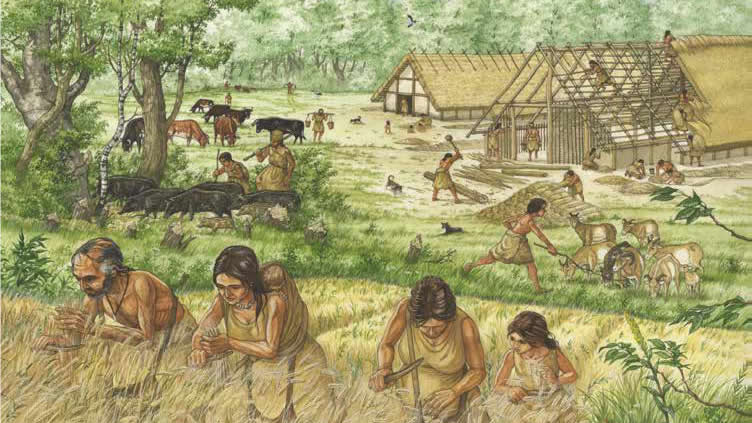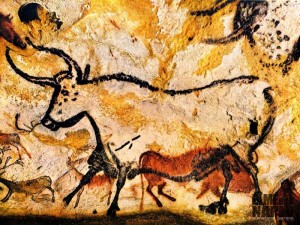The assumption has always been that humankind moved away from the hunter-gather lifestyle to farming because it was a better way of life, a step forward whereby food supplies were more stable and populations could increase. However recent studies have thrown some of these ‘obvious’ reasons into doubt.
The first humans were all hunters and gatherers. There is no doubt that our steadily increasing abilities to hunt large amimals – based on our tool-making and communication skills – contributed significantly to the increase in our intake of nutrients. We therefore became bigger and this also enabled our brains to develop to their full potential. We probably became healthier too, because we had a more regular intake of food. But why did the next step in human food production, namely agriculture, which started about 10,000 years ago, occur at all ?. It’s always been taken for granted that this was the next ‘logical’ step. But why should this have been so ?
Historians have recently discovered that a move to an agrarian way of life did not necessarily improve human health
Agriculture has been seen by historians in the past as possibly the biggest breakthrough ever for humankind. In terms of civilisation, this is undoubtedly true. For the agrarian way of life to work it needed humans to co-operate as well as congregate in vilages in ever larger numbers. Ultimately out of this process there arose states and empires. However, historians have recently found that a move to agriculture did not necessarily improve human health. On the contrary, the first villages or towns, like our cities today, were not very healthy places. Hunter-gatherers were, in many areas, likely to have longer and healthier lives than farmers.
This raises two big questions…
1. Why did people embrace agriculture if it didn’t improve their chances of survival ?
The answers here lie between various ‘push’ and ‘pull’ factors :
The Push Factors : Lords and nobles forced the farming population together by using authority and force. And life in the wild was, after all, a pretty brutal kind of existence. Another group could easily attack you and take your food stores. Villages offered protection, even if safety often came at the price of subservience.
The Pull Factors : Villages provided the opportunity to acquire goods that a hunting band could not make for themselves. Villages also maximised resources. Grain stores, as the story of Moses tells us, could help large groups of people pull through lean times. Conversley though recent research has shown that those communities that stayed with the nomadic lifestyle, rather than settled down as farmers, would have got the better of bartering exchanges with those that did become farmers because they got more calories in return for their meat than they provided.
2. How did settled societies manage to overcome this health deficiency over time?
The answer to this has a lot to do with our ever-increasing resistance to epidemics. Like those of other animals, the human immune system is adaptive, it ‘learns’ a lot about illnesses that have been around for a while and this increases our chances of survival. Ironically, human cohabitation in large units therefore, over time, strengthens our immune responses. Sustained levels of nutrition, even in hard times, also helps protect against illness. And perhaps most important of all, increasingly these groups of villages did not live in isolation. Instead, they became part of networks that eventually would come to cover much of the Eurasian continent.






You must be logged in to post a comment.